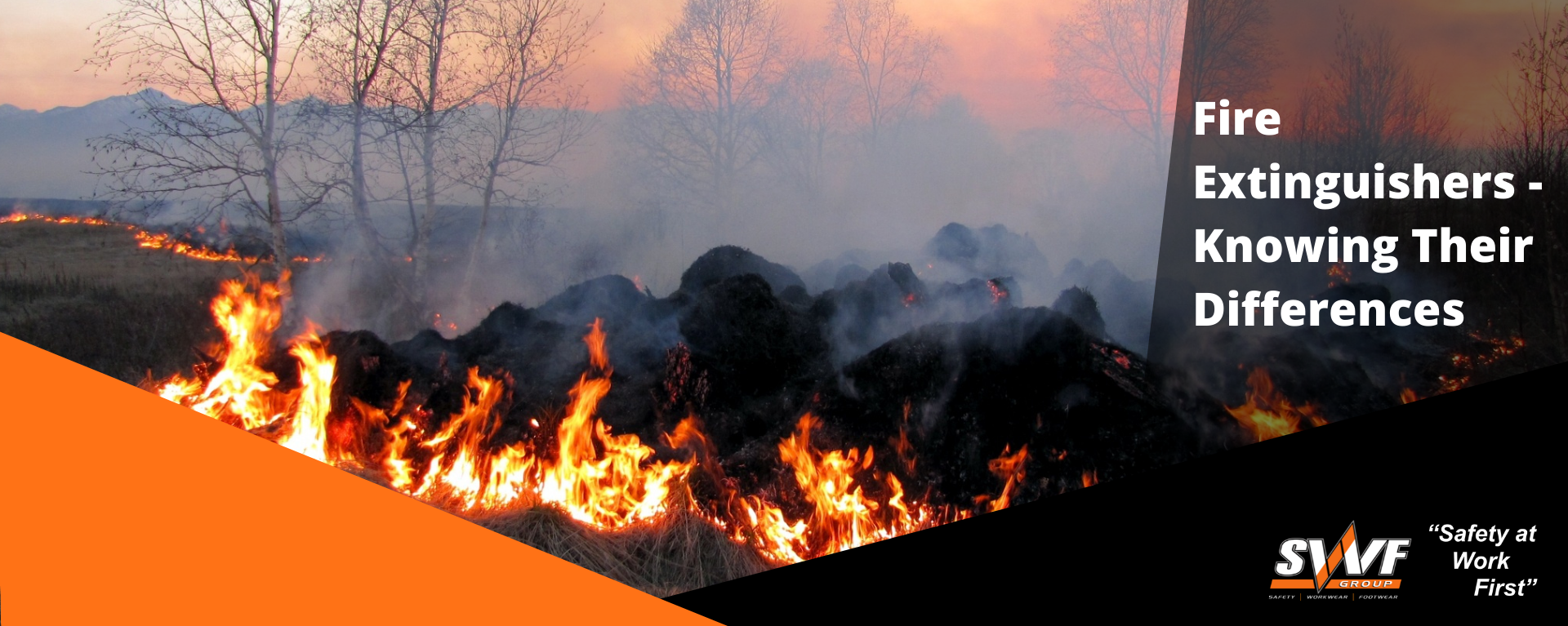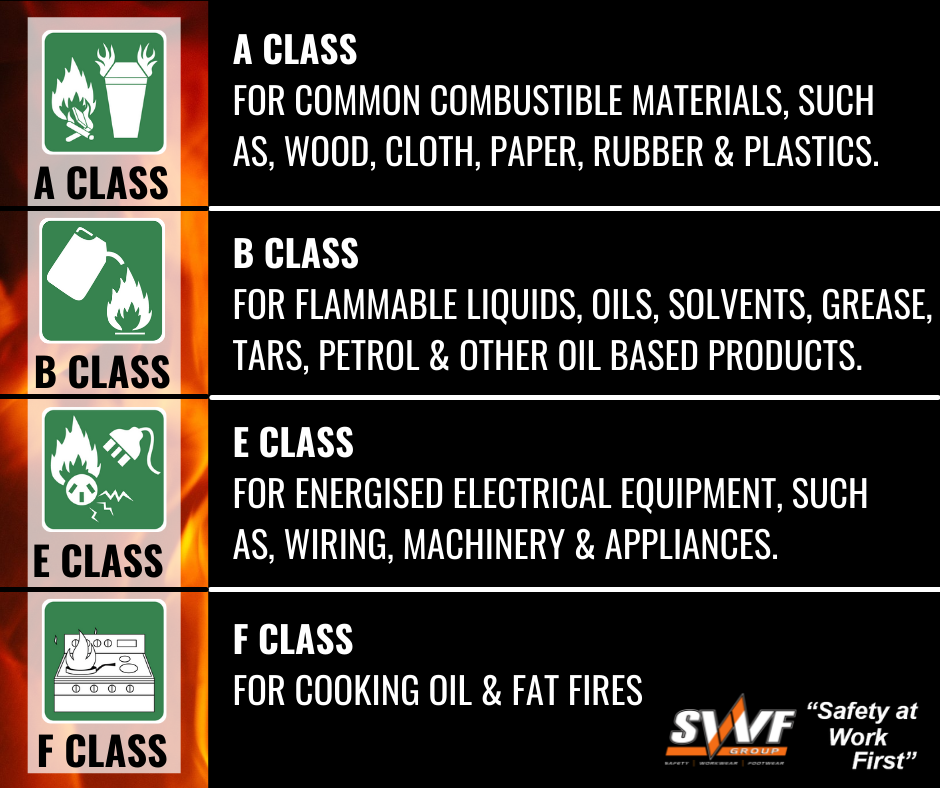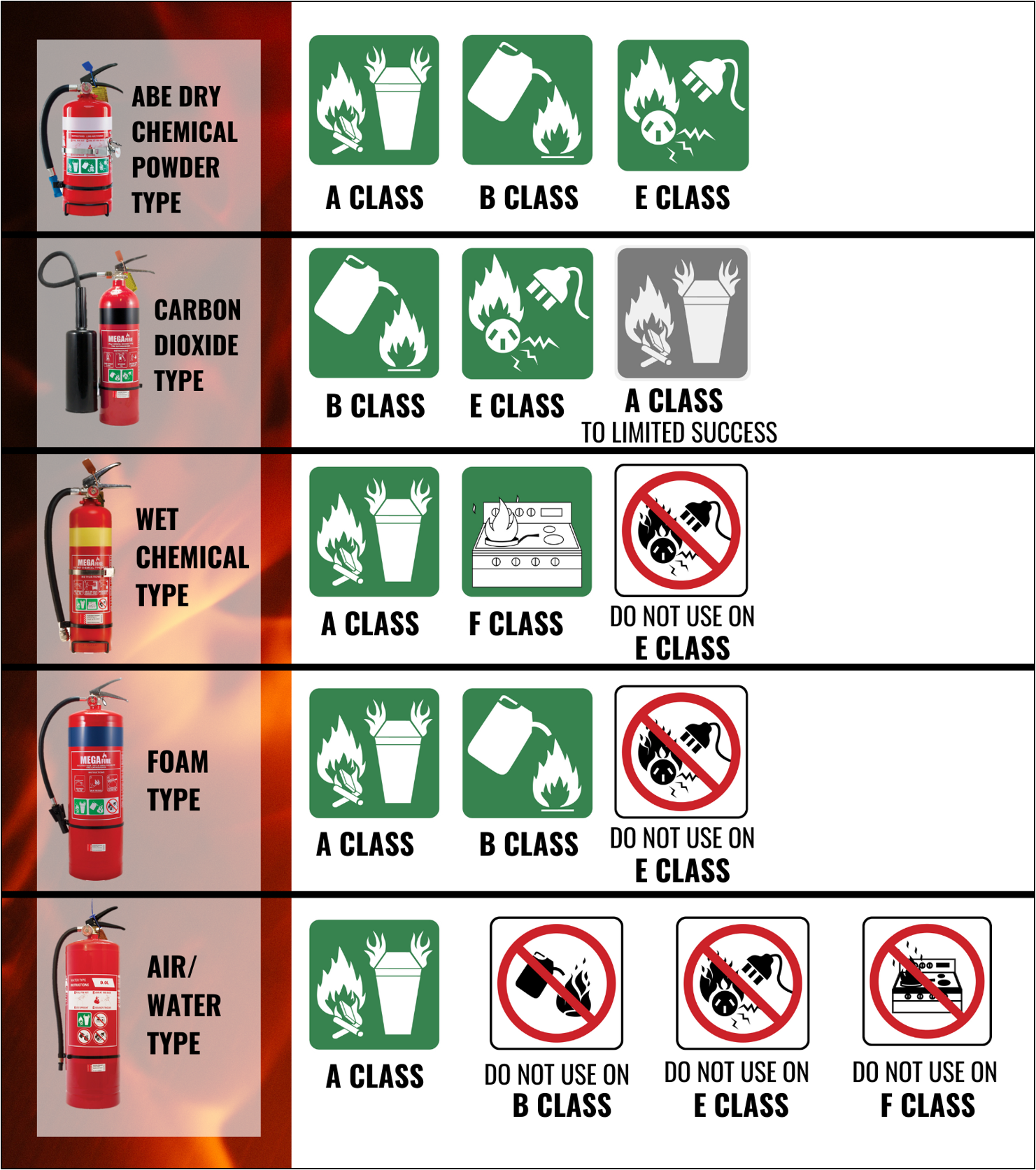
Fire Extinguishers - Understanding Their Differences
Have you ever gone over your fire plan and realised you’re missing a fire extinguisher or two that you should have, or decided that it’s definitely time you bought one for your home, only to get instore and stare at all the different types of extinguishers in bafflement?
If that sounds like you then read on to be demystified.
Firstly you need to determine which class of fire you are likely to be dealing with. The below diagram breaks down the 4 different classes of fires represented by symbols which you will find printed on the fire extinguishers.
Most fire extinguishers cover more than one class of fire. The picture below shows which classes of fire each fire extinguisher type is made for.
Now to discuss the pros and cons of each fire extinguisher type.
An ABE dry chemical powder extinguisher is the most versatile of extinguishers as it can be used effectively against three different classes of fires. In many cases it is the most cost effective option due to this reason and it comes in a wide range of sizes to suit every need from cars to factories. However, extinguishing a fire with one of these does cause a lot of extra mess (think lots of white powder). In most cases this is not highly important as it is more urgent to put the fire out than to worry about a bit of extra mess. However, if the fire breaks out somewhere like a data room where there is a lot of computer equipment, using a powder type extinguisher can actually cause damage to the equipment that could be avoided by using a better suited extinguisher like a CO2.
A CO2 fire extinguisher is your ideal option for dealing with electrical fires where you want to avoid extra damage to your equipment. It works by directing a stream of highly pressurised liquid carbon dioxide at the fire to effectively starve the fire of oxygen and therefore put it out. CO2 is a natural non-corrosive and non-conductive gas, and if you’re looking for an extinguisher for a server room or electrical substation this is the one for you. However, these extinguishers are more expensive than an ABE one.
Wet chemical type fire extinguishers use a very effective soap like substance that cools down burning oils while a chemical reaction blankets the surface. They are designed to be used for cooking oils and fat fires, however, they may also be used on paper and wood based fires. They are ideal for office, home and commercial kitchens.
Foam type extinguishers are best used for flammable liquid fires. They can also be used on A class fires but not on energised electrical equipment. They are perfect for locations where flammable fuel is stored.
Air/water extinguishers extinguish fires in the most well known way – by spraying water at the fire. They can only be used for A class fires and are highly effective at putting these common combustible fires out, making them a great option for agricultural businesses as well as being useful to have in the workshop or at home.
SWF Group | 'Safety at Work First!'


 Australian Owned & Operated
Australian Owned & Operated







